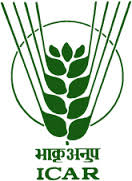About Conservation Agriculture
Conservation Agriculture (CA) is defined as a sustainable agriculture production system comprising a set of farming practices adapted to the requirements of crops and local conditions of each region, whose farming and soil management techniques protect the soil from erosion and degradation, improve its quality and biodiversity, and contribute to the preservation of the natural resources, water and air, while optimizing yields.
Conservation Agriculture (CA) is defined as a sustainable agriculture production system comprising a set of farming practices adapted to the requirements of crops and local conditions of each region, whose farming and soil management techniques protect the soil from erosion and degradation, improve its quality and biodiversity, and contribute to the preservation of the natural resources, water and air, while optimizing yields.
Agronomic practices included in CA are based on three core principles, which must be fulfilled concomitantly:
- Minimum soil disturbance.
- Maintenance of permanent soil covers.
- Cropping system diversity, crop rotations.
Some concepts related to CA are:
- No tillage
No tillage (NT) is a CA agronomic practice for annual crops, and is defined as a way to farm without disturbing the soil through tillage. NT must leave at least 30% of area covered by plant residues right after crop establishment, and crops are sown using a machinery which is able to place seeds through plant residues from previous crops. The agronomic practice that best characterizes CA for annual crops is NT, which has the highest degree of soil conservation in annual crops, since the mechanical tillage of the ground is completely suppressed. - Groundcovers
Groundcovers (GC) is the most widely used CA agronomic practice for perennial crops, whereby the soil surface between rows of trees remains protected against erosion. With this technique, at least 30% of the soil not covered by the canopy is protected either by sown cover crops, spontaneous vegetation or inert covers, such as pruning residues or tree leaves. For the establishment of sown cover crops and the spread of inert covers, farmers must use methods in coherence with CA principle of minimum soil disturbance.





